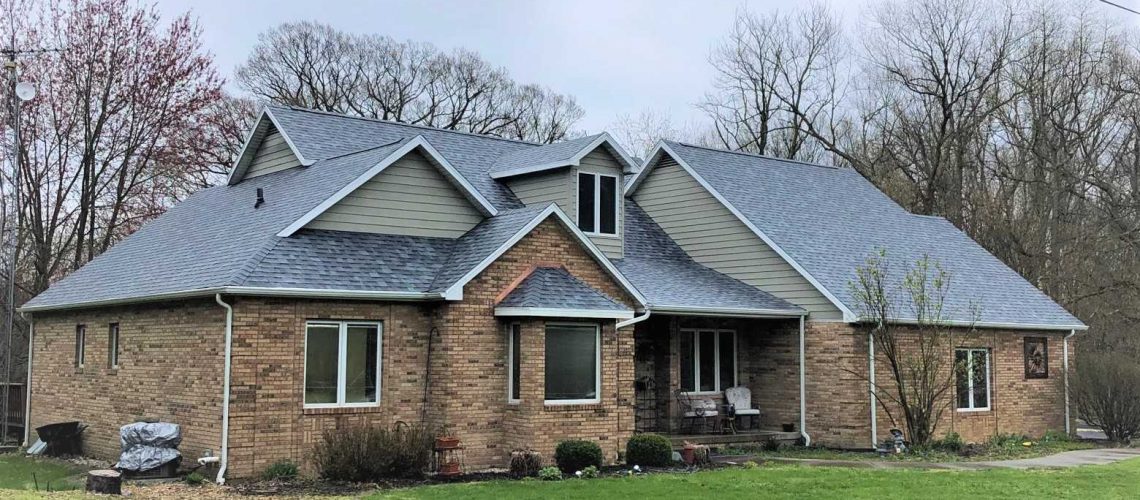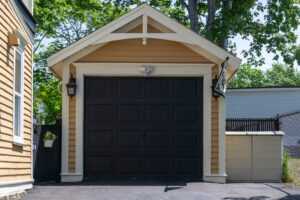The roofing market in the USA is worth $56.1 billion in 2022. Roof replacement is in constant high demand and for good reason.
Your roof protects your home from extreme weather, temperatures, and water damage. It insulates you and your family in cold seasons, keeping you healthy and saving you money.
Your roof takes a beating over its lifetime, and you need to know when to replace it. Roofing problems expose your home to the elements. They can cause your electric bill to skyrocket.
But when exactly do you need a roof replacement service?
We can explain what to look out for. Read on for 7 major signs you need a roof replacement.
1. Your Roof Is Over 20 Years Old
Many mid-range roof types are designed for a 30-year average lifespan. But most roofs start to degrade after 20 years. While you could stretch it another 10 years, it would be a troublesome process.
Check your home records for your last shingle or whole-roof renovation. What is your roof made from? Wood, slate, and cement all age at different rates.
Older properties may have shingles made from less durable materials. Investing in modern durability can give you peace of mind for longer.
2. Roof Replacement Is a New Theme in Your Neighborhood
Suburban properties are often built as a single project. As a result, they tend to age together, too.
Have you seen a few of your neighbors investing in roof replacements? This could mean it’s time to look at your own.
Climate and weather extremes affect your whole area. Your neighbors may notice something you miss. One telltale sign of leaky insulation is melted frost on your or your neighbors’ roofs.
3. Your Shingles Show Their Age
Your shingles may curl at their edges with age. They may crack with temperature changes and humidity fluctuations. Both of these signs affect your roof’s ability to protect, heat, and cool your home.
Loose shingles pose a danger to people around your home. They may fall in high wind. Missing shingles let in cold, water, and even pests like wasps.
Your shingles should lie flush with each other, flat to your roof. This ensures they keep out the elements. Broken shingle material can fall into your gutters, block drainage, and cause floods.
4. Drips, Leaks, and Internal Water Damage
Water damage is one of the most expensive causes of home insurance claims. It is also one of the most common.
Water could cause direct damage, or mold could grow after the leak. Black mold can harm your lungs, cause allergic reactions, and it spreads fast.
Check your interior loft space for dampness. Stains, damp patches, and light from the outside are all signs of roof leakage. Turn off your torch and see where sunlight enters.
A humidity meter lets you see how much moisture is in your attic. Dehumidifiers offer a fast fix, but they fail to solve the underlying problem. Deal with it before it gets worse.
5. Your Roofline Looks Crooked or Curved
How does your roof look from the outside? Roofs in good condition look straight, solid, and parallel. This means their structure is intact and strong.
Look out for dips, sags, or curves in your roofline. Check out anything that looks less than perfect. This could be a red flag for immediate roof repair.
Water saturation can cause your roof to sag, stopping it from insulating your home. Sagging rooflines can have damaged shingles, exacerbating your roof issues.
At worst, parts of your roof could even collapse. You can prevent this by checking your roof from varying distances or heights. You could even ask your neighbors to look at it from their upper windows.
6. Your Roof Shows Signs of Storm Damage
Our weather in Illinois can be extreme. Tornadoes, thunderstorms, flash floods, strong winds, and hail can strike at any time of day.
While the most extreme threaten your safety, even milder events can damage your roof.
Winds can pull shingles from your roof. Heavy hail can batter them like rocks. Wind debris can cause huge damage to your roof materials.
Storms in particular as a major threat. Once high winds break your shingles, the oncoming rain has a direct entry point into your loft and home. You may miss this until it becomes a big problem.
Inspect your roof after all storms or get a professional to do it. Deal fast with any post-storm roofing problems. Even minor damage can worsen without roof repair.
7. Nature Has Taken Over Your Roof
Moss grows in damp areas, shaded from direct sunlight. If your roof has moss, it means that area retains more moisture than it should. You can remove moss with a brush but always check for the cause.
Neighboring buildings, trees, or other structures may cast shadows on your roof. Cracked shingles can become porous, giving moss and fungi the water they need to grow.
Moss on your roof can attract unwanted pests too. Many insects like the same damp conditions. Once the weather gets colder, they may find a way inside your home.
Invest in algae-resistant shingles for your next roof replacement. This helps stop dark streaks from ruining your home’s aesthetics.
Looking for a Roof Replacement Company Near You?
We hope our guide helped you spot any roofing problems. Roof replacement is a periodic investment, and knowing the signs gives you the tools to fix it fast. Make roof checks part of your home maintenance routine.
Our team at Freeman Exteriors can help keep your roof in top shape. We are a family-owned roofing renovation company based in Illinois. Our team can reach you across Champaign, Vermilion, and Danville counties.
We know simplicity and communication is the cornerstone of quality home renovation. You can reach us when you need us. Our Illinois reputation speaks volumes for our expertise and customer service.
Is your roof showing its age? Get in touch for your free estimate today!




